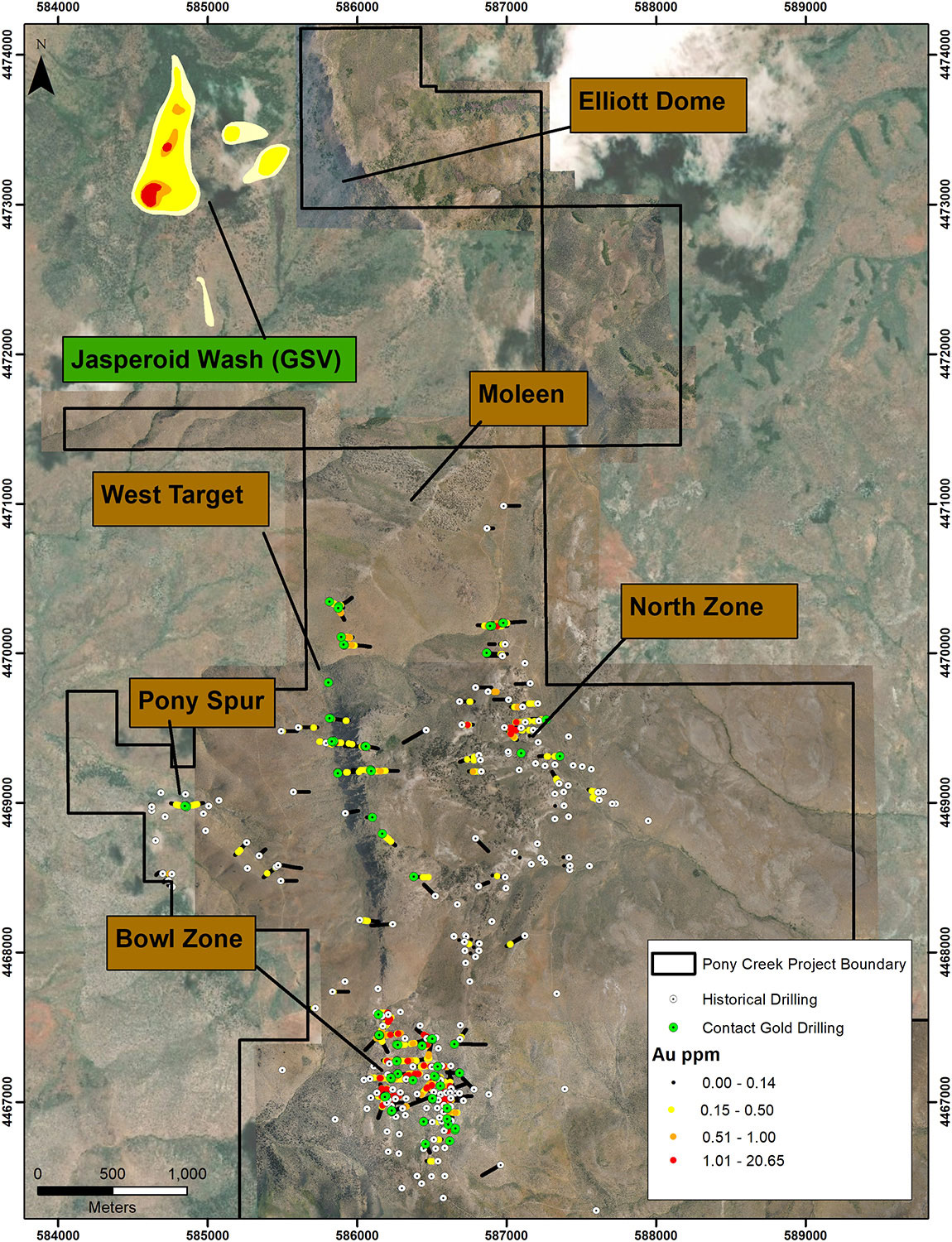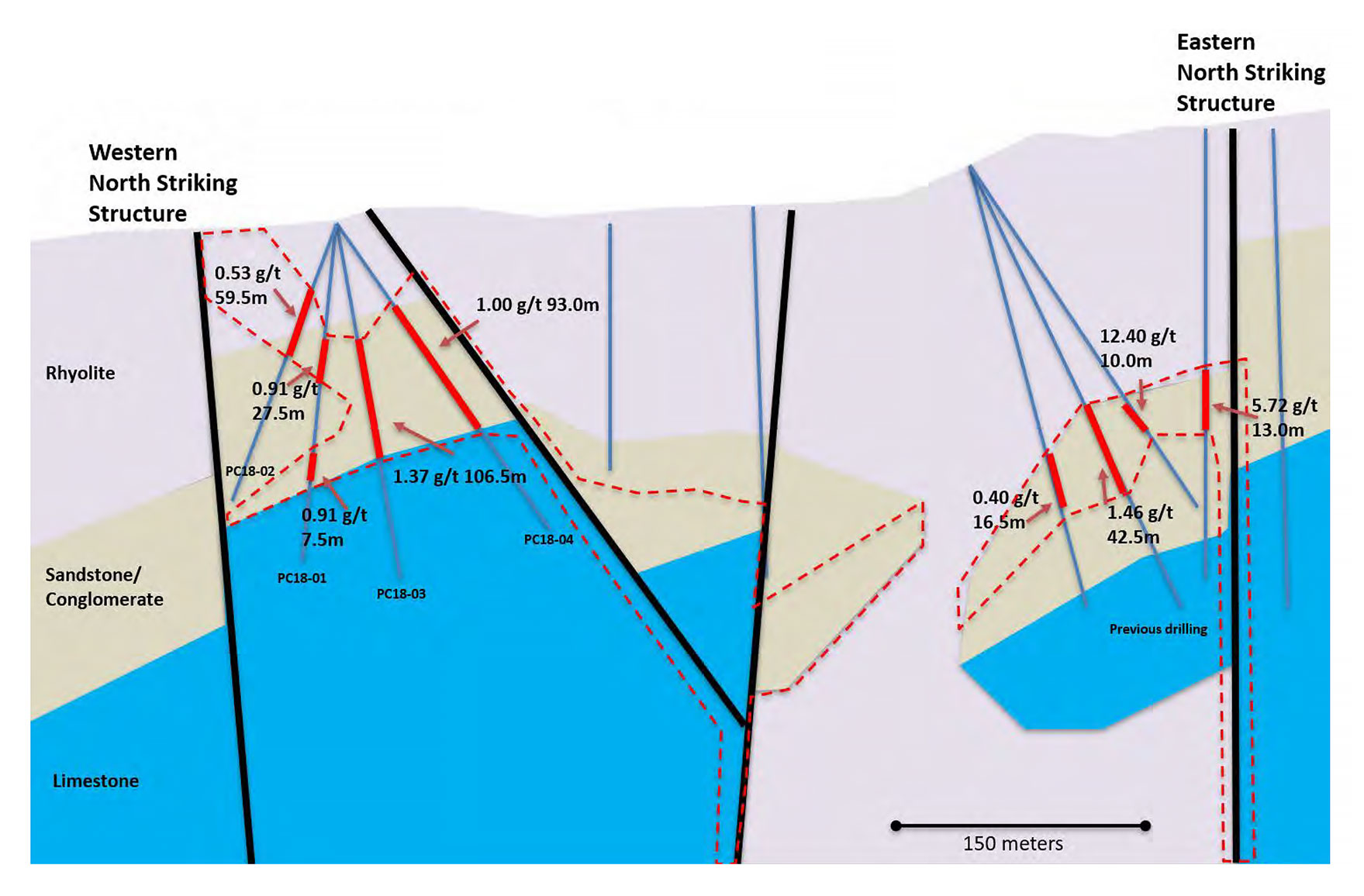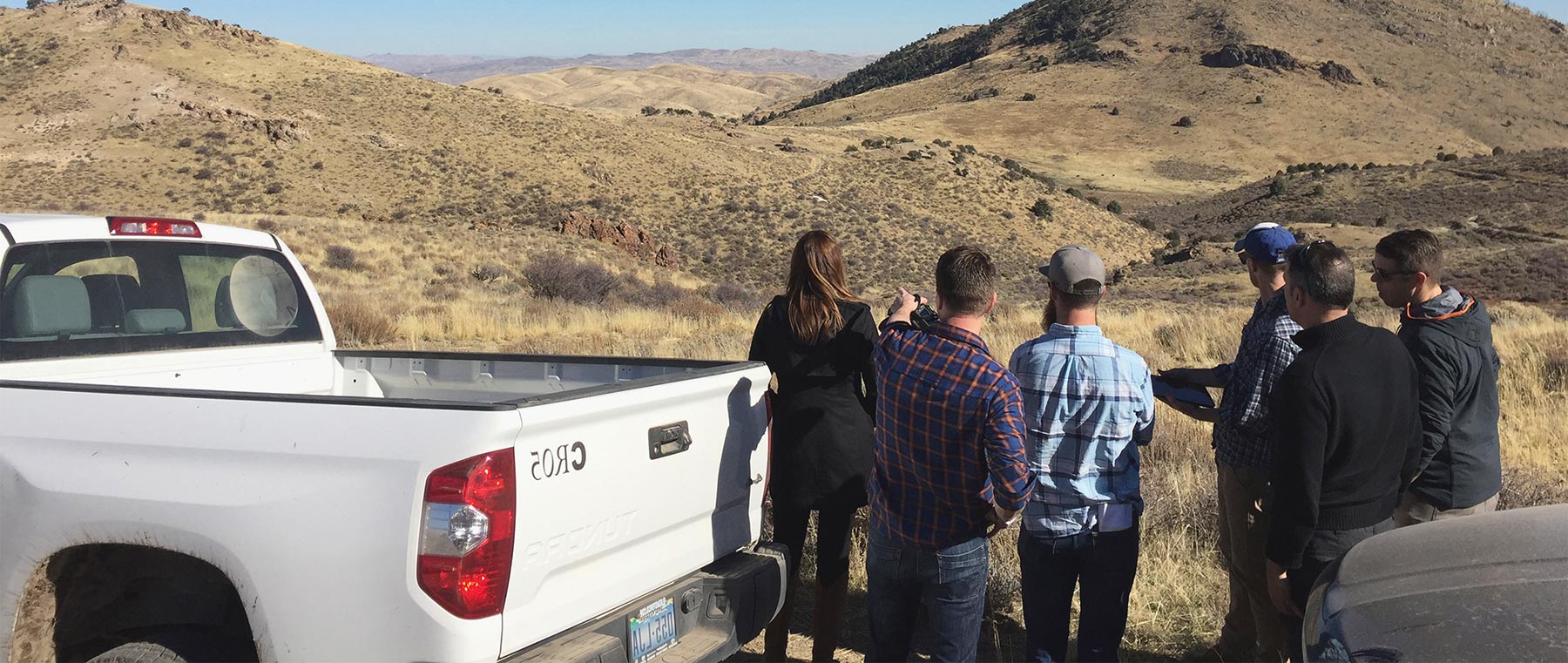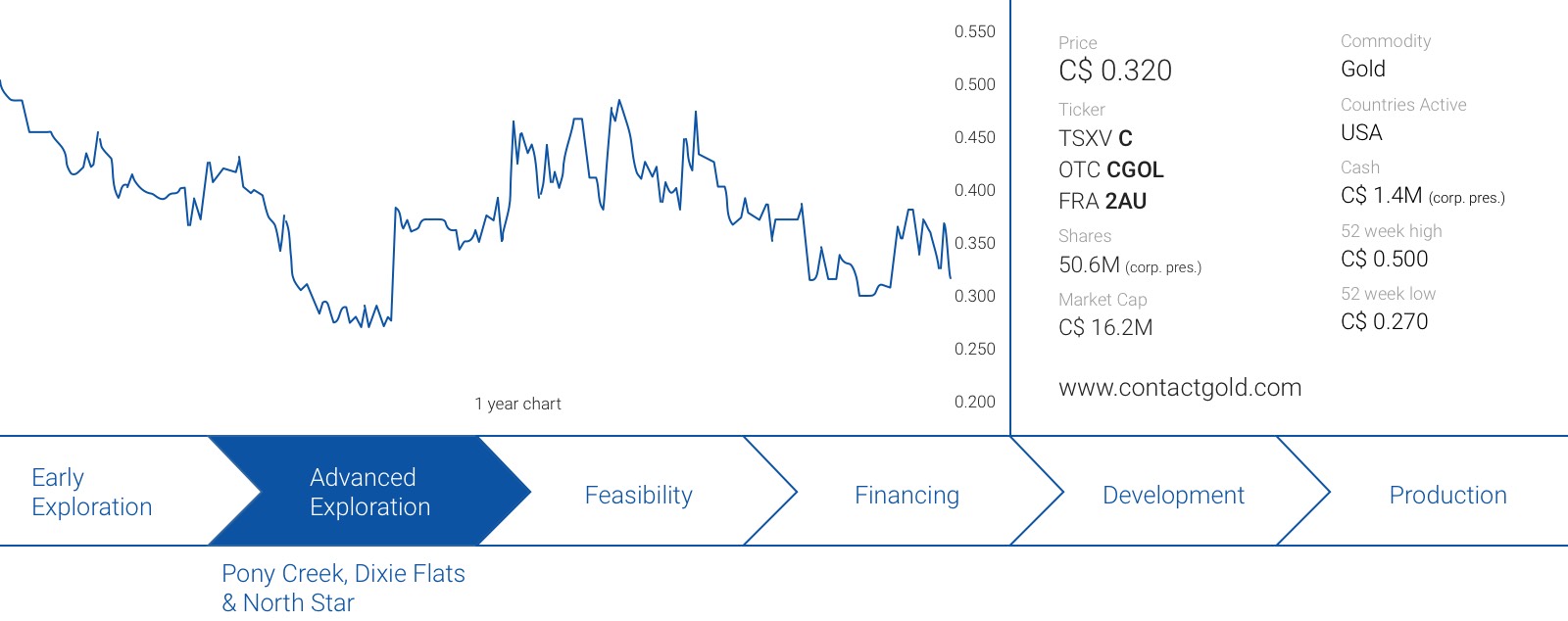It’s always interesting to see how companies are spending their cash positions. Some prefer to fund the golf club membership of a CEO or hand out C$30,000 annual car allowances, but companies like Contact Gold (C.V) are spending the cash where it should be spent: on the ground to aggressively advance the Pony Creek project in Nevada. Forget about fancy offices (the company is sub-leasing office space from Integra Resources (ITR.V)), Contact’s main priority is to create value for its shareholders by drilling.
All assay results from the 2018 drill program have now been received and released by the company, as well as an updated quarterly report.
Contact Gold is still spending the vast majority of its cash on the project
In one of our previous reports, we were positively surprised by the percentage of the funds Contact Gold is effectively spending on the property, and as the exploration season was in full swing in the third quarter, we anticipated an even higher percentage of the total expenses to be spent on Pony Creek.
Our expectations have been met, with approximately 75% of the C$2.57M in cash expenditures incurred during the third quarter spent on the ground (C$1.94M). Although the dividend payable on the preferred stock is currently a non-cash item, it will eventually have to be paid so it would make sense to add the C$272,000 amount for the third quarter back to the equation for a fairer comparison.
As of the end of September, Contact Gold had a working capital position of almost C$1M, of which C$816,000 consisted of cash in the bank. As we’re now almost four months later, the cash position has probably been depleted by now, and the sale of two properties for C$635,000 in cash was a very welcome solution to ensure Contact Gold didn’t have to raise money during December, the weakest month of the year to raise cash.
We expect Contact Gold to head back to the equity markets in the current quarter to raise enough money to complete its 2019 exploration season.
Almost all assay results have been released by now
Contact had a very successful exploration season in 2018 , as anywhere it drills, the company continues to find gold mineralization. 22 of the 23 holes that have been drilled on the newly-discovered West Zone have hit gold mineralization and the last hole Contact reported, hole 51, had an average grade of approximately 0.33 g/t gold over almost 93 meters literally starting at surface. 0.33 g/t may not sound spectacular (and it isn’t), but the fact that it starts at surface very likely makes it viable thanks to Contact’s strong preliminary metallurgical test results which were published in the first half of last year (see here).
And although one probably wouldn’t build a mine based on gold zones with an average grade of 0.33 g/t, it does provide a company with a commercial viable plan to extend the mine life of an existing mine. Once all infrastructure will have been put in place (for instance if/when a decision to develop the higher-grade Bowl zone will be mined), the marginal cost of digging out low-grade rock and throwing it on the leach pads should be relatively low. The other holes drilled at the west zone confirmed the presence of a ‘blanket’ of gold mineralization with grades between 0.15 and 0.40 g/t, and now it’s Contact Gold’s task to analyze the data from the 2018 drill campaign before designing the exploration plans for 2019. There’s a lot of gold all over the place but Contact Gold will need to figure out which zones could eventually be mined. You can re-read our previous in-depth overview of the previously reported drill results.

Now Contact Gold has established the existence of wide-spread gold mineralization, it’s important to take a step back to look at the bigger picture. The West Zone contains all typical characteristics of a Carlin-type gold system. In those systems, encountering the large zones of low-grade gold is very common, but what’s really important are the expected high-grade pods of mineralization within the blanket of lower grade rock.
That’s exactly what the neighbors at Gold Standard Ventures (GSV.TO, GSV) have been encountering and developing. GSV originally discovered a similarly low-grade zone, and further drilling zoomed in on the discovery of one of those higher-grade pods which culminated in what’s now known as the North Dark Star deposit. Recent drill results at North Dark Star combine oxide-hosted gold mineralization with higher-grade sulphide material underneath. Hole 18-109 drilled by Gold Standard Ventures encountered 18.3 meters of 1.13 g/t gold in the oxides, followed by a thick layer of 15.2 meters at 4.24 g/t gold in a sulphide zone, approximately 200 meters further down-hole.
Gold Standard’s technical work on its own property could help Contact Gold as it will allow its technical team to interpret and understand the structural controls and stratigraphy much faster.
Now that the 2018 drill program has been completed and the Company has almost all the assay results, Contact Gold has been able to confirm a 2.3-kilometer strike length containing gold mineralization at the West Zone. Additionally, Contact Gold now has a much better understanding of the entire Pony Creek mineralized system, as 89 of the 93 holes drilled since the summer of 2017 have encountered gold mineralization. We are still waiting for the assay results of the final three holes, and Contact’s management expects to have the results by the end of this month, or early next month.

What will 2019 bring?
Contact Gold’s technical team is now in the final stages of reviewing all data from the 2018 exploration season and this should result in an updated exploration vision for this year. Due to adverse weather conditions limiting the Company’s ability to immediately go back in, Contact Gold has some time to define its plans for 2019, and we anticipate a proposed work program and related budgets later this quarter.
In addition to the exploration programs, we also look forward to seeing the results of a maiden NI43-101 compliant resource calculation on Pony Creek’s Bowl Zone. It will be interesting to see a reworked version of the historical resource estimate which contains almost 1.5 million ounces of gold at an average grade of 1.5 g/t. It’s not easy to put a resource target out there, but we would be satisfied with 750-800,000 ounces at 1 g/t (for the Bowl Zone alone, excluding the North Zone which could add more ounces, but would have a lower average grade). This initial estimate would be an excellent basis to continue to build upon to reach the critical mass needed for a development decision as a standalone project.
Of course, the 2019 exploration program will continue to drill-test the ‘virgin ground’ surrounding the currently known mineralized zones, and you should keep in mind that 85% of the land package has never been drilled. This doesn’t mean new discoveries are guaranteed, but given the recent exploration success on the West Zone and the Elliott Dome zone, it’s hard to imagine there isn’t more gold to be found on the property that could potentially add valuable resources to be included in a mine plan later on.
Conclusion
Now that the market has fully digested all exploration results, the tax loss selling season is over and investors are looking at gold exploration plays in safe jurisdictions again, Contact Gold should be in an excellent position to attract some of those dollars. It’s now beyond any doubt there’s a widespread blanket of gold mineralization on the Pony Creek project, but we hope Contact’s focus in 2019 will be on determining the zones that could be economically viable.

Disclosure: Contact Gold is a sponsor of the website. The author has a long position in Contact Gold.







